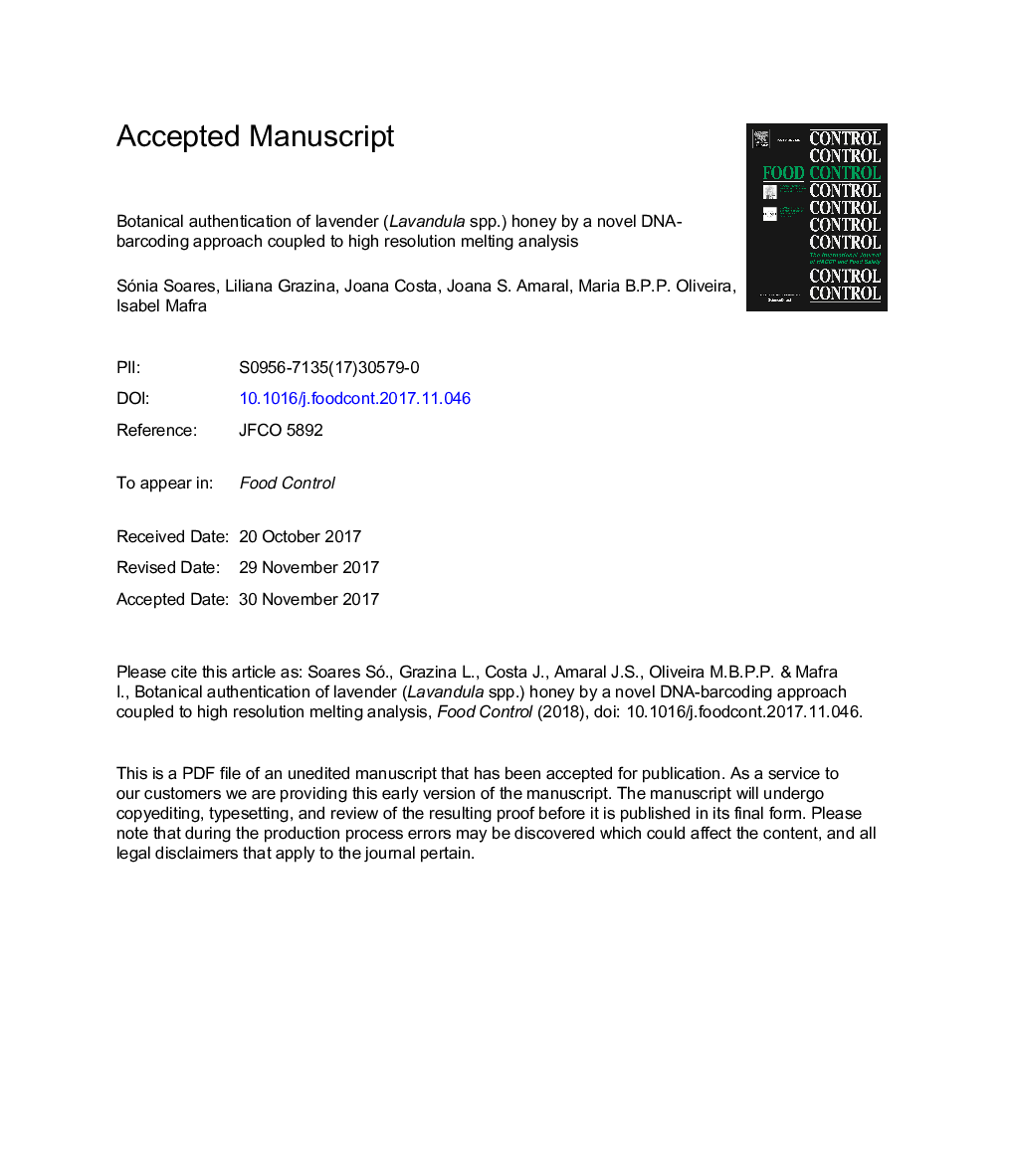| Article ID | Journal | Published Year | Pages | File Type |
|---|---|---|---|---|
| 8888178 | Food Control | 2018 | 29 Pages |
Abstract
Monofloral honeys (such as, lavender honey) are highly appreciated by the consumers due to their flavour, taste and properties. However, since they are considered prime products, they are often targets of adulteration. This work exploits DNA barcoding combined with high resolution melting (HRM) analysis to establish the botanical origin of honey, using lavender honey as a case study. The plastidial matK gene was targeted as a candidate barcode for Lavandula species identification. The method allowed differentiating the species in three clusters with confidence levels >99%, being the results well correlated with the sequencing analysis. It was successfully applied to identify the botanical origin of several lavender honeys, which were grouped in the cluster of the most common species in Portugal (L. stoechas subsp., L. penduculata and L. viridis). The proposed method represents a simple, specific and cost-effective tool to authenticate the botanical origin of honey.
Related Topics
Life Sciences
Agricultural and Biological Sciences
Food Science
Authors
Sónia Soares, Liliana Grazina, Joana Costa, Joana S. Amaral, Maria B.P.P. Oliveira, Isabel Mafra,
